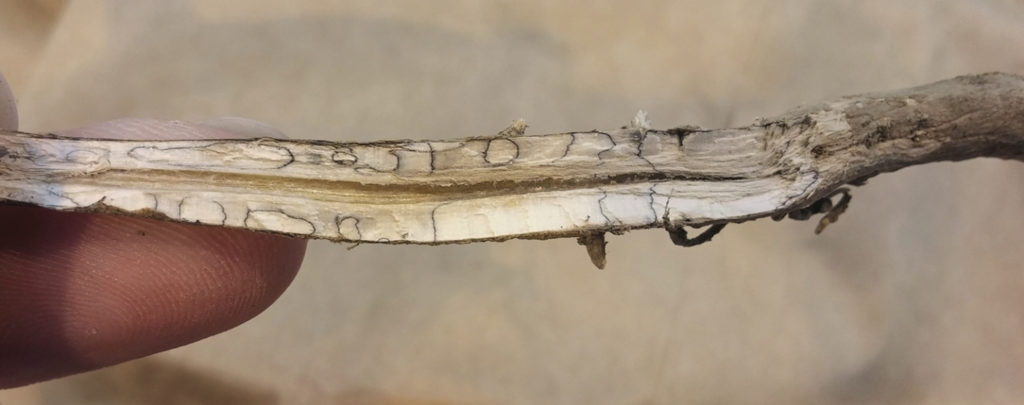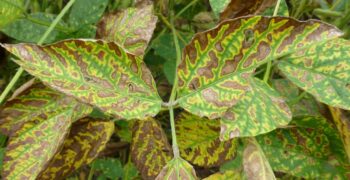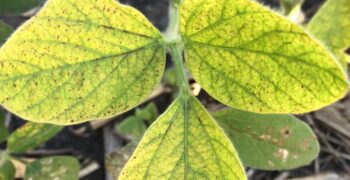Background:
Pod & stem blight and Phomopsis seed decay are both caused by the fungal pathogen Diaporthe sojae. Pod & stem blight can infect everything on the soybean plant above ground. The distinguishing factor that differentiates pod & stem blight from other diseases is that the specks of fungal matter are in linear rows on the stem. The specks can also be found on the pod, but don’t illustrate the linear rows, like they do on the stem. Infected plants will turn yellow in the upper canopy, and eventually die. When the seed becomes infected, it turns a chalk white colored mold, and the seed coat becomes shriveled and cracked, reducing seed quality. The fungal pathogen can infect early in the growing season, but symptoms won’t show till later in the season. When varieties are close to maturity (within your growing maturity range), warm, humid weather conditions are prime for this disease to show up in infected fields. The fungus can overwinter in seed and in crop residue.
Scouting: R6-R8
Symptoms will not show up till later in the season around R6-R8 growth stages. The fungal pathogen can infect early in the growing season, but symptoms won’t show till later in the season. Look for black specks that are in a linear row on the stem, they also appear on pods but not in linear rows. Infected plants will turn yellow in the upper canopy, and eventually die. When the seed becomes infected, it will turn a chalk white colored mold, and the seed coat becomes shriveled and cracked, reducing seed quality. The fungus can overwinter in seed and in crop residue. Weeds such as velvetleaf, and pigweed are hosts plants of the fungal pathogen.
Management:
- Avoid planting infected seed
- Rotating to a non host crop, such as corn
- Tillage will bury residue and reduce the infection for the following year
- Timely harvest, don’t let infected fields stay out in the field
- Applying a fungicide at R5 can protect seed quality, but not yield



